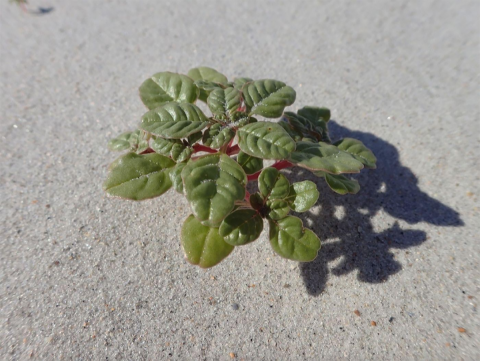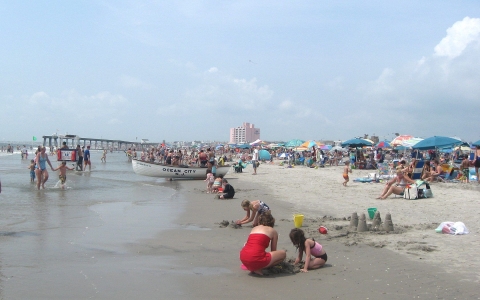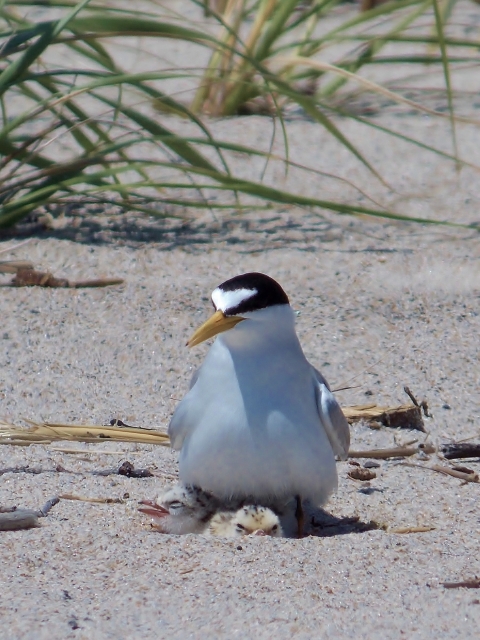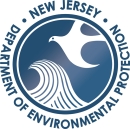Click here to return to the New Jersey Field Office home page.
For the Protection of Federally and State-listed Threatened and Endangered Species
Beach Management Planning Overview
New Jersey’s beaches are a summer playground for thousands of residents and visitors each year. This narrow ribbon of sand is also home to a remarkable array of imperiled beach-nesting birds and plants. Federal and State agencies are working with Atlantic coastal towns and other land managers in New Jersey to develop site-specific beach management plans for the protection of federally and State-listed threatened and endangered species.
The purpose of beach management planning is to provide a framework for cooperation among local beach managers, the New Jersey Department of Environmental Protection (NJDEP), and the U. S. Fish & Wildlife Service (Service) in the stewardship of federally and State-listed endangered and threatened beach-nesting birds and flora occurring on New Jersey’s beaches. The goal of a beach management plan is to provide for long-term protection and recovery of listed species populations, while recognizing the need for storm protection and recreation. Each plan includes descriptions of the roles and responsibilities of local beach managers, the NJDEP, and the Service in the protection and management of listed species. Upon completion, management plans are approved by the appropriate governmental body, such as a town council, and a memorandum of agreement is signed by all parties.
What is Included in a Beach Management Plan?
Plans are developed with full input of local officials and staff directly responsible for beach management activities including mechanical beach raking, trash removal, life guards, law enforcement, and recreational uses to reflect a beach’s operational needs. Plans address a wide range of issues including: symbolic fencing for protection and management of listed species, trash collection and beach clean-ups, beach raking, sand fencing, vegetation management, predation management, enforcement of pet laws and State Coastal Zone Management rules, operation of vehicles on the beach, designation of portions of beach as protected management zones for listed species, and the role of local site managers in endangered species management.
The plans also identify the listed species present at individual beaches in order to determine which Federal and State laws and regulations are applicable. For example, the Federal Endangered Species Act of 1973, the New Jersey Endangered and Nongame Species Conservation Act of 1973, and the New Jersey Coastal Zone Management rules protect federally and State-listed species. Beach-nesting birds are also protected under the Federal Migratory Bird Treaty Act of 1918. Finally, plans should be consistent with Service guidelines for managing piping plovers (Charadrius melodus) and seabeach amaranth (Amaranthus pumilus).
Listed Species
Beach management plans address all federally and State-listed species, and other species of special concern that may occur within a particular beach jurisdiction. The plans are flexible enough to accommodate future species colonization.
Birds | Plants |
|---|---|
Piping plover (Charadrius melodus) – federally listed as threatened and State-listed as endangered, territorial nester | Seabeach amaranth (Amaranthus pumilus) – federally listed as threatened and State-listed as endangered, annual plant |
Key Elements of a Beach Management Plan
• applicable laws and regulations
• roles and responsibilities of each party to the plan
• management zones and natural areas
• recovery goals for listed species
• management issues
• biological surveys and monitoring
• predation, herbivory, and disease
• human disturbance (motorized and non-motorized)
• beach management and maintenance
• beach raking
• refuse and large debris removal
• dune management
• beach nourishment
• sand scraping
• beach access structures
• education and outreach
Benefits of Developing a Beach Management Plan
Publicly funded beach nourishment projects authorized by the U.S. Army Corps of Engineers (Corps) benefit shore communities by providing storm protection and increased opportunities for recreation and tourism. Widened beaches also attract federally and State-listed species. To ensure protection of listed species, the Corps and the NJDEP require that towns and public lands receiving beach nourishment prepare a beach management plan. Developing and implementing such a plan helps Federal, State, and local officials manage and minimize potential conflicts between recreation and species protection. Furthermore, designation of different beach zones through the planning process —to promote more active recreation in some areas and more passive beach activities in others (e.g. , bird watching, nature walks, shell collecting)—increases an area’s ability to provide a greater diversity of recreation. The availability of popular, nature-oriented recreation benefits the residents and visitors of beach communities. In 2011 almost 2 million U.S. residents participated in wildlife watching in New Jersey, with associated expenditures of nearly $1 billion (U.S. Department of the Interior and U.S. Department of Commerce, 2014). In addition to ecotourism, beach management planning promotes educational opportunities. Management plans can provide for the development of public educational displays regarding listed species, educational talks, and interpretive nature walks. The Service and NJDEP are also available to provide information regarding federally and State-listed species for local newspapers and other publications.
Promote a Beach Management Plan
Encourage your municipality to work with the U.S. Fish & Wildlife Service to develop a beach management plan to protect federally and State-listed threatened and endangered species.












